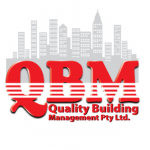Non-compliance with the ever changing Australian Building Standard
Introduction
There are a myriad of obligations placed on a Body Corporate under legislation most importantly the obligation to maintain in good condition the common property. Read on to discover how these are affected by the Australian Building Standards.
What is “Common Property”
All the property and land, that is part of the scheme but does not form part of any individual lot, is referred to as the ‘common property.’
Personal Injury and the Body Corporate’s Liability – Who’s Responsible?
The obligation imposed under the statutory framework creates, at common law, a duty of care upon the Body Corporate to prevent injury of persons on the common property.
Importantly, there is not a duty to ensure the absolute safety of all persons, but one to take reasonable care to avoid a foreseeable risk of injury.
If the risk of injury arises because part of the common property is non-compliant with the Australian Building Standards, which were not in force at the time of construction, then the Body Corporate will not be deemed liable solely for a failure to comply with the Australian Building Standards (“ABS”).
The leading authority is Jones v Bartlett.1 In that case Plaintiff was the son of the tenants of a residential property owned by Defendant, who had been living on the property with his parents for four months before walking through a glass door (thinking it was open) and suffering injuries.
Upon building inspection, the glass door appeared to be in good repair and operating normally and it complied with building standards and regulations applicable at the time of construction.
The current ABS, demanded the glass be a thickness of 10 mm, or toughened safety glass, laminated glass or safety organic coated glass. However, the standard at the time of construction required a thickness of only 4 mm of annealed glass.
Plaintiff alleged that Defendant had failed to replace the 4mm annealed glass door with glass complying with the safety standards that would have applied had the building been newly constructed or if the glass door had recently been replaced by the owners.
There was no evidence to suggest that the owner knew that the glass was annealed, that they knew of the different types of glass, nor that they were aware of the contemporary Australian Standards.
Importantly, the door was compliant with the safety standards applicable at the date of construction, it was irrelevant that it did not meet the more rigorous standards imposed later.
Notably, Gleeson CJ stated:
There is no such thing as absolute safety. All residential premises contain hazards to their occupants and to visitors. Most dwelling houses could be made safer, if safety were the only consideration. The fact that a house could be made safer does not mean it is dangerous or defective. Safety standards imposed by legislation or regulation recognise a need to balance safety with other factors, including cost, convenience, aesthetics and practicality.
Later cases have relied upon Jones v Bartlett as authority for the proposition that premises are to be judged by the safety standards in existence at the date of construction and that safety standards are not retrospectively applied to a building.
In Commonwealth of Australia v O’Callaghan, the Plaintiff pushed his hands through the glass doors at the Commonwealth Employment Service (‘CES’) while he was there to claim social security benefits. He suffered injuries and sued the Defendant for negligence as occupier of the premises. Kennedy J considered that the Defendant was not in breach, noting that there is no such thing as absolute safety. In response to an argument that the glass should have been replaced to comply with Australian Standards, he said:
Acknowledging that the Australian standards do not pre-empt the common law, there is no evidence that the glass doors did not comply with the standard when the building was constructed.
In Smith v Body Corporate for Professional Suites Community Title Scheme 14487, the Plaintiff fell through the glass in the foyer of a building whilst attempting to enter the building with her swipe card. She suffered injuries and alleged negligence on behalf of the Body Corporate for a failure to arrange an audit of the glass doors as to whether they complied with the prevailing Australian Standards.
The building was constructed in 1971.
The glass wall was made of 6mm thick annealed glass. This complied with the relevant standard when the building was built in 1971. In summary, the trial judge held that because the glass was compliant with the standard at the relevant time (1971) and the Body Corporate confirmed that it had not conducted any safety audit of the glass in its entryway or foyer between 1971 and December 2001(the date the accident occurred), the Body Corporate was not negligent.
Two judges (in the Court of Appeal) considered and agreed with the trial judge because:
- The degree of risk of an accident happening in this case was extremely low (ie, about 5,000 persons used the foyer every year without incident).
- The glass doors were open during the day. Due to the doors being open, invitees could not bump into the side glass panels because they were covered by the doors. In this case, the doors were closed at night but (typically) persons using their swipe card would not be near the side glass panel (which broke).
- There had been no incident or difficulty with the glass panels for 30 years.
- There was no evidence that the Body Corporate knew or ought to have known of the
propensity of the glass to break. - During the renovation of the foyer which occurred in 2001, there was no suggestion in the
architect’s specification that the glass in the side panels was of a kind that was more likely than other kinds of glass to injure a person if they fell against it.
When can the Body Corporate be found liable?
In Taylor v The Owners Strata Plan 11564, a defective shop awning fell on top of a person, fatally wounding them. The Body Corporate was aware of the defect but had failed to take any action to rectify the defect and was subsequently found liable for the accident.
In Brown v OC201532U, the Plaintiff was injured while attempting to climb over a common property fence and gate which was not functioning at the time. The Body Corporate knew that the rear fence and gate were in disrepair and not functioning, but had failed to rectify the damage. The Plaintiff was awarded $600,000.00 in damages plus legal costs.
Conclusion
There are a multitude of factors that the Court will look to in determining liability and, of course, each case turns upon its facts.
Non-compliance with Australian Building Standards does not deem the common property defective nor does it create a risk of injury in and of itself, which liability may be found. However, a Body Corporate should not take comfort in the fact that their building complied with the applicable Australian Standard at the time of construction, as mere compliance will not absolve a Body Corporate of future liability.
Each component of a building i.e. hand railing, stairs, roof, floors and doors should be individually assessed for any foreseeable risk of injury and/or harm it presents to a person.
A Body Corporate should seek to rectify any defect that it knows of, and which is likely to cause a foreseeable risk of injury or harm to an owner or invitee of common property.
Do you have a question about the compliance of your building or the Australian Building Standards? Then contact the experts at QBM today!






